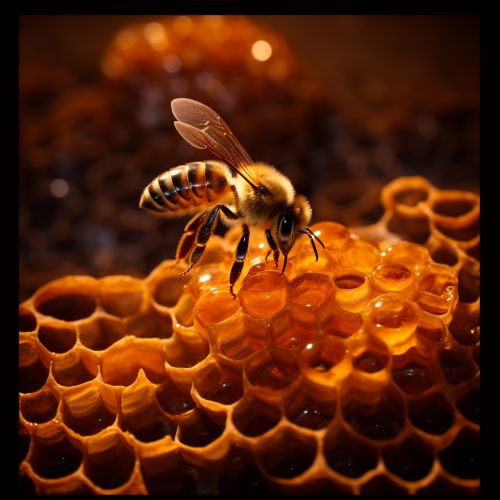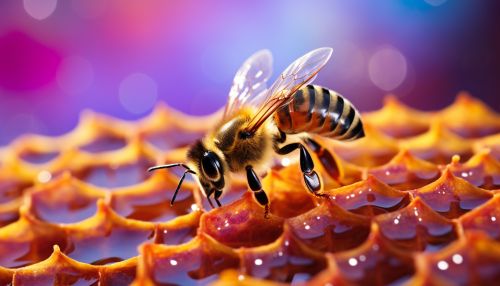Waggle dance
Introduction
The waggle dance is a fascinating phenomenon observed in the world of Apis mellifera, or honey bees. This unique form of communication is a method used by foraging bees to communicate the location of food sources to their hive mates. The dance involves a series of movements that convey specific information about the direction and distance to the food source.


Behavioral Description
The waggle dance is performed by a worker bee that has returned to the hive after finding a rich source of food. The dance is performed on the vertical combs within the hive. The dancing bee moves forward a short distance while shaking her body from side to side, then circles back to the starting point to repeat the dance. The direction of the straight run of the dance indicates the direction of the food source relative to the sun, while the duration of the waggle run indicates the distance to the food source.
Communication
The waggle dance is a form of animal communication that is both complex and precise. The dancing bee is able to convey specific information about the location of a food source to her hive mates, who are then able to find the food source using the information provided. This form of communication is unique to honey bees and is a key factor in their ability to efficiently exploit food resources.
Mechanics of the Dance
The waggle dance consists of two main parts: the waggle phase and the return phase. In the waggle phase, the bee moves forward in a straight line while vigorously shaking her body from side to side. This phase of the dance provides information about the direction of the food source. The return phase involves the bee circling back to the starting point of the dance in order to repeat the waggle phase.
Directional Information
The direction of the food source is indicated by the angle of the waggle phase relative to the vertical. If the bee waggles straight up, this indicates that the food source is directly towards the sun. If the bee waggles at an angle to the right or left of the vertical, this indicates that the food source is at that angle to the right or left of the sun.
Distance Information
The distance to the food source is indicated by the duration of the waggle phase. The longer the waggle phase, the greater the distance to the food source. For example, a waggle phase of approximately one second indicates a food source about one kilometer away.
Interpretation by the Colony
The information provided by the waggle dance is interpreted by the other bees in the hive through a combination of visual and vibrational cues. The dancing bee produces specific vibrations with her wing muscles that are detected by the other bees. These vibrations, along with the visual cues provided by the dance, allow the other bees to interpret the information about the location of the food source.
Evolutionary Significance
The waggle dance is believed to have evolved as a means for honey bees to efficiently exploit food resources. By communicating the location of a food source to their hive mates, foraging bees are able to recruit other bees to the food source, thereby increasing the rate at which the food is collected.
